Chapter: 11th Home Science : Chapter 6 : Family Meal Management
Family Meal Management
Family Meal Management
INTRODUCTION
In recent times, food has emerged
as a source of comfort and a potential threat to health. It reflects cultural
heritage and gives a feeling of security and pleasure. Healthy food intake is
an important part of life. Hence, it is very essential to gain knowledge about
food, its planning, preparation and service. Creative meal management for
people at different age groups can add pleasure and satisfaction to their lives
and ensure healthy living.
1. Balanced Diet
A balanced diet is one which
provides all the nutrients in required amounts and proper proportions so that
the need for calories, proteins, minerals, vitamins and other nutrients are
adequately met. It can be easily achieved through a blend of four basic food
groups. The nutrient require-ments vary with age, gender, physiologi-cal status
and physical activity. A balanced diet provides (i) 50-60% of total calories from carbohydrates, (ii) about 10-15% from proteins (iii) and 20-30% from both visible and
invisible fat. In addition, a balanced diet should provide other non-nutrients
such as dietary fiber, antioxi-dants and phytochemicals.
2. Recommended Dietary Allowance (RDA)
The Recommended Dietary Allowances
(RDA) presented are in estimates of nu-trients to be consumed daily to ensure
that the requirements of all individu-als in a given population are met. The
recommended levels depend upon the bio availability of nutrients from a given
diet. The term bio availability indicates what is absorbed and utilised by the
body. In ad-dition RDA includes a margin of safety, to cover variation between
individuals, die-tary traditions and practices. The RDAs are suggested for all
age groups such as infants, pre-schoolers, children, adoles-cents, pregnant
women, lactating mothers and adult men and women taking into ac-count their
physical activity. The RDA of an individual depends upon various fac-tors which
are as follows:
Age:Adults require more total calories
than a child, whereas a growing child requires more calories per kg of body
weight than an adult.
Sex:Males with high Basal Metabolic
Rate (BMR) require more calories than females.
Activity:The type of activity also
determines the energy requirements . T h e activities are classified as
sedentary, moderate and heavy based on the occupation of an individual as given
in the table 1 below
Physiological stress: Nutrient requirements are increased in conditions of
physiological stress such as pregnancy and lactation.
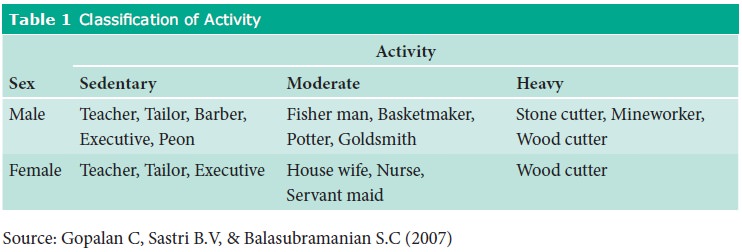
3. Steps in Planning Balanced Diets or Menu Using Food Guide Pyramid and Exchange Lists
Menu planning is the process of
planning and scheduling intake of meals for general or specific individual
requirements. The four food groups suggested by ICMR given in unit-III (Food
Science), permits an indi-vidual to plan a menu to achieve nutrient intake as
specified by recommended die-tary allowances. There are certain princi-ples in
planning menus. They are:
·
A
good menu plan should meet the nu-tritional requirements of each member of the
family.
·
Meal
pattern must fulfill family needs.
·
Meal
planning should save time and energy.
·
Meal
planning should satisfy the bud-get of the family.
·
Meal
plan should give maximum nutrients.
·
The
meal planned should consider in-dividual likes and dislikes.
·
Planned
meals should provide variety.
·
Meals
should give satiety.
·
Menus
should include available foods.
There are three steps involved in
planning a menu
Step1: Recommended dietary allowance:
To plan a balanced diet the first
step is to know the recommended dietary allow-ances for different age groups.
The Recommended Dietary Allowance
for Indians ICMR (2010) is given in the Table 2.
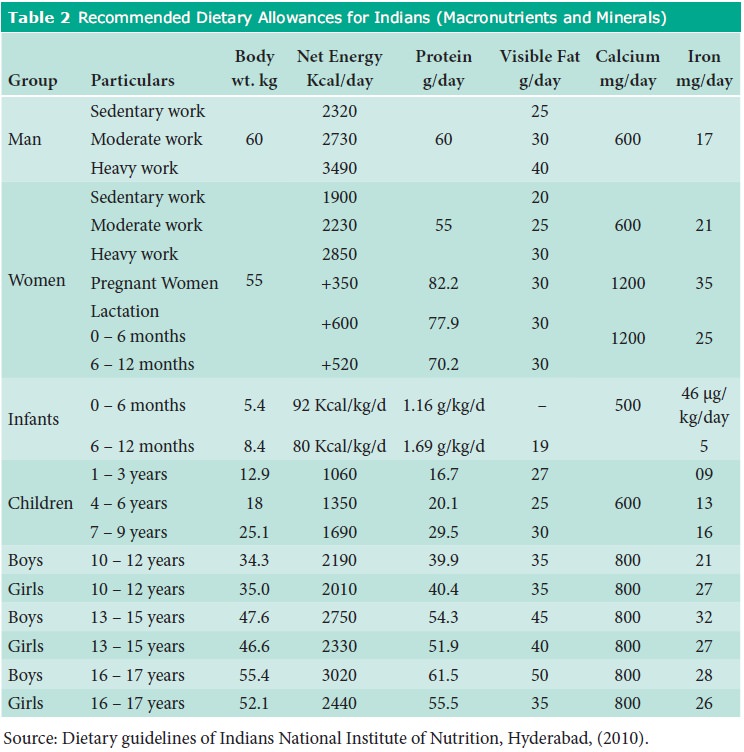
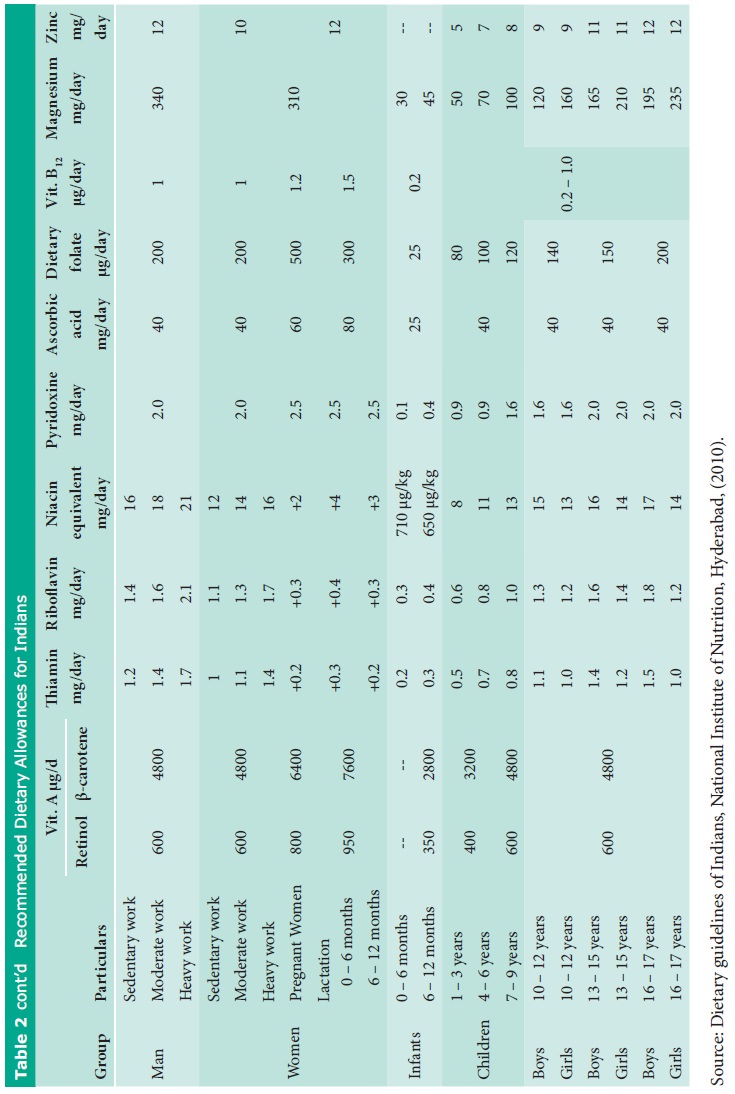
Step 2: Food list
Food list is the list of quantities of various food groups
to be included in the diet so that it is balanced and can meet the RDA. This
can be done by:
·
Selecting
food from all the four food groups.
·
Deciding
the quantities of the selected as multiples of portion sizes.
Food list can be prepared either by using ICMR tables or
exchange lists.
i. Using ICMR tables
To make menu planning more con-venient ICMR has suggested
the portion size and balanced diets for adults and for different age groups.
The portion sizes are given in terms of raw food.
ii. The Exchange Lists
The Exchange Lists are the basis of a meal planning. Food
exchange lists are groups of measured foods of the same calorific value and
similar protein, fat and carbohydrate content. All foods of exchange lists make
a specific contribution to a good diet. Food exchange lists help in
manipulation of protein, calories and other nutrients.
Step 3: Meal plan
The foods that are listed are
converted into recipes and distributed in various meals like breakfast, lunch
and dinner. My Plate helps individuals to make better food choices and eat
healthfully. It illus-trates the food groups using a familiar mealtime visual.
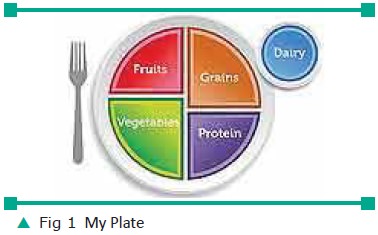
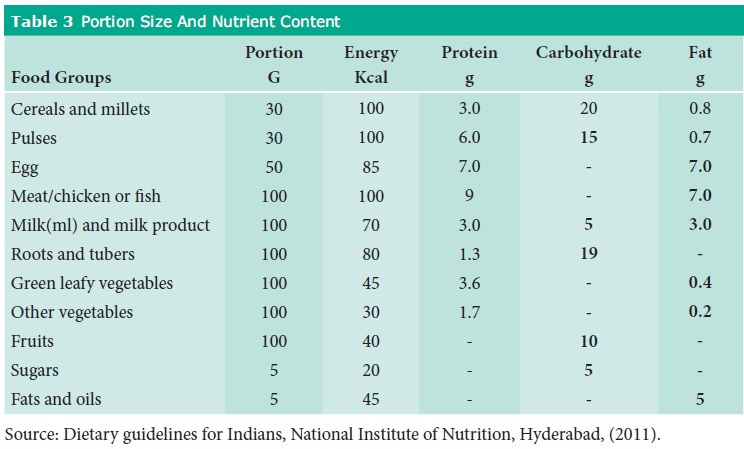
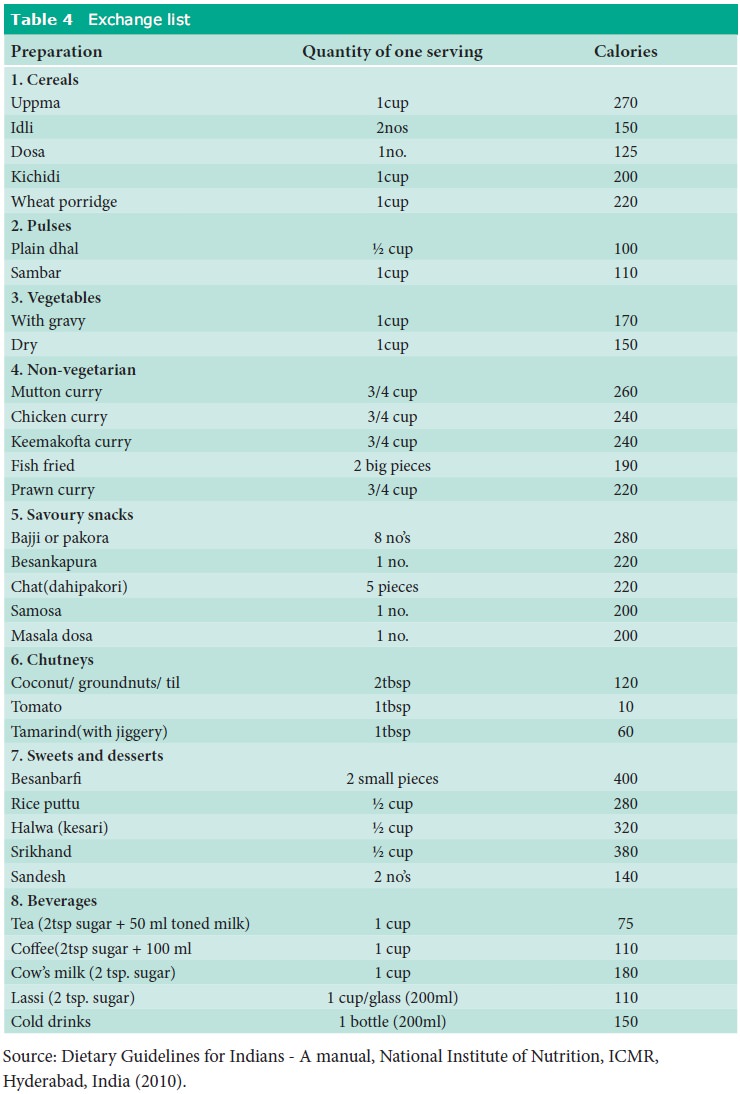
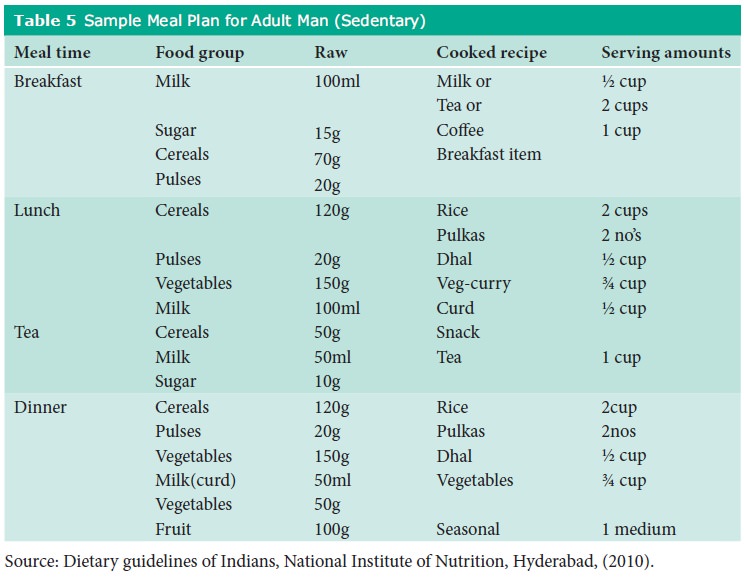
Related Topics